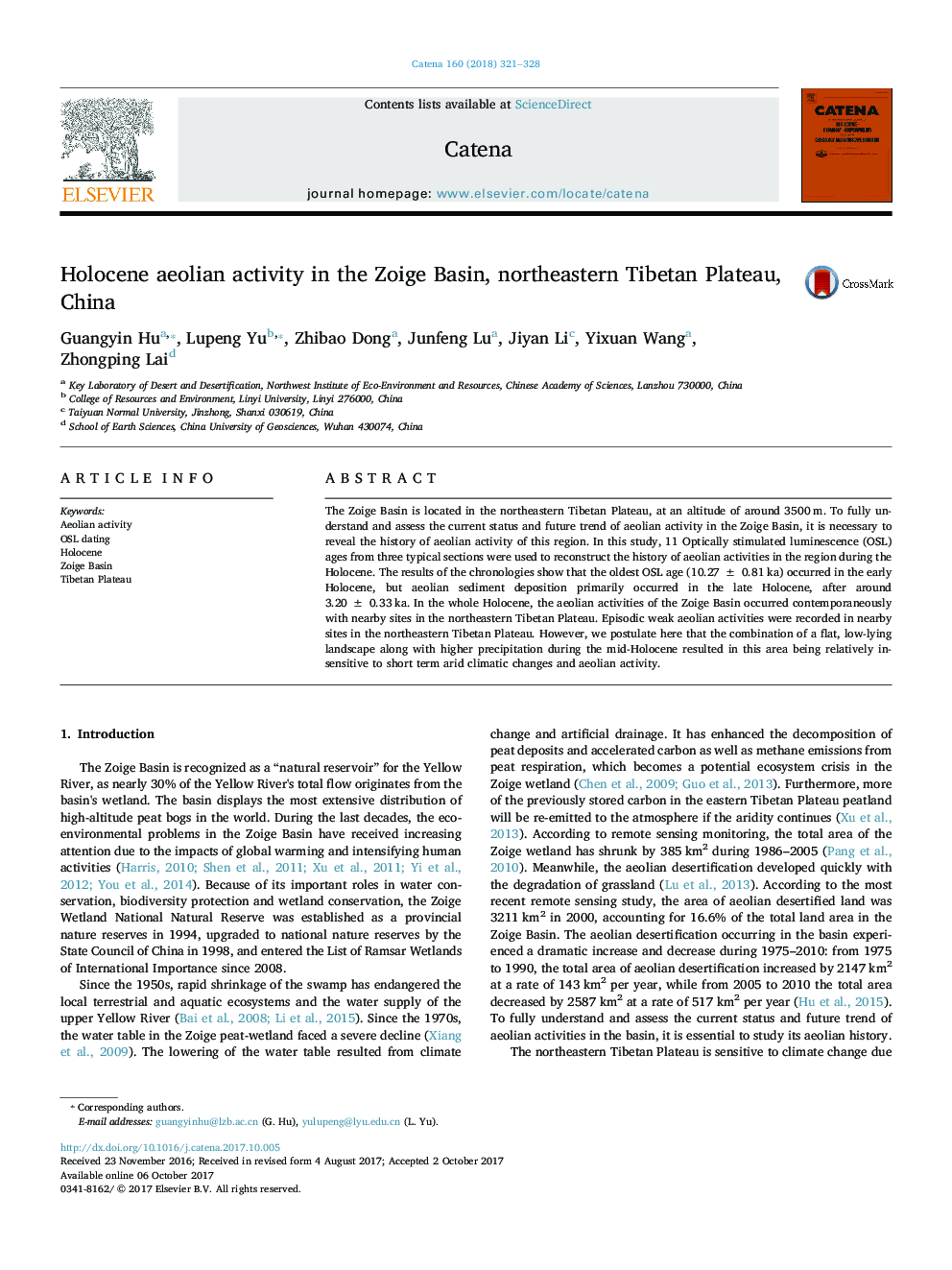| Article ID | Journal | Published Year | Pages | File Type |
|---|---|---|---|---|
| 5770048 | CATENA | 2018 | 8 Pages |
â¢Aeolian activities were reconstructed using OSL dating.â¢Aeolian activity occurred in the early and late Holocene.â¢Aeolian sediments mainly accumulated in the late Holocene.â¢The cease of aeolian activity in the mid-Holocene was due to high precipitation and flat and low-lying geomorphology.
The Zoige Basin is located in the northeastern Tibetan Plateau, at an altitude of around 3500 m. To fully understand and assess the current status and future trend of aeolian activity in the Zoige Basin, it is necessary to reveal the history of aeolian activity of this region. In this study, 11 Optically stimulated luminescence (OSL) ages from three typical sections were used to reconstruct the history of aeolian activities in the region during the Holocene. The results of the chronologies show that the oldest OSL age (10.27 ± 0.81 ka) occurred in the early Holocene, but aeolian sediment deposition primarily occurred in the late Holocene, after around 3.20 ± 0.33 ka. In the whole Holocene, the aeolian activities of the Zoige Basin occurred contemporaneously with nearby sites in the northeastern Tibetan Plateau. Episodic weak aeolian activities were recorded in nearby sites in the northeastern Tibetan Plateau. However, we postulate here that the combination of a flat, low-lying landscape along with higher precipitation during the mid-Holocene resulted in this area being relatively insensitive to short term arid climatic changes and aeolian activity.
